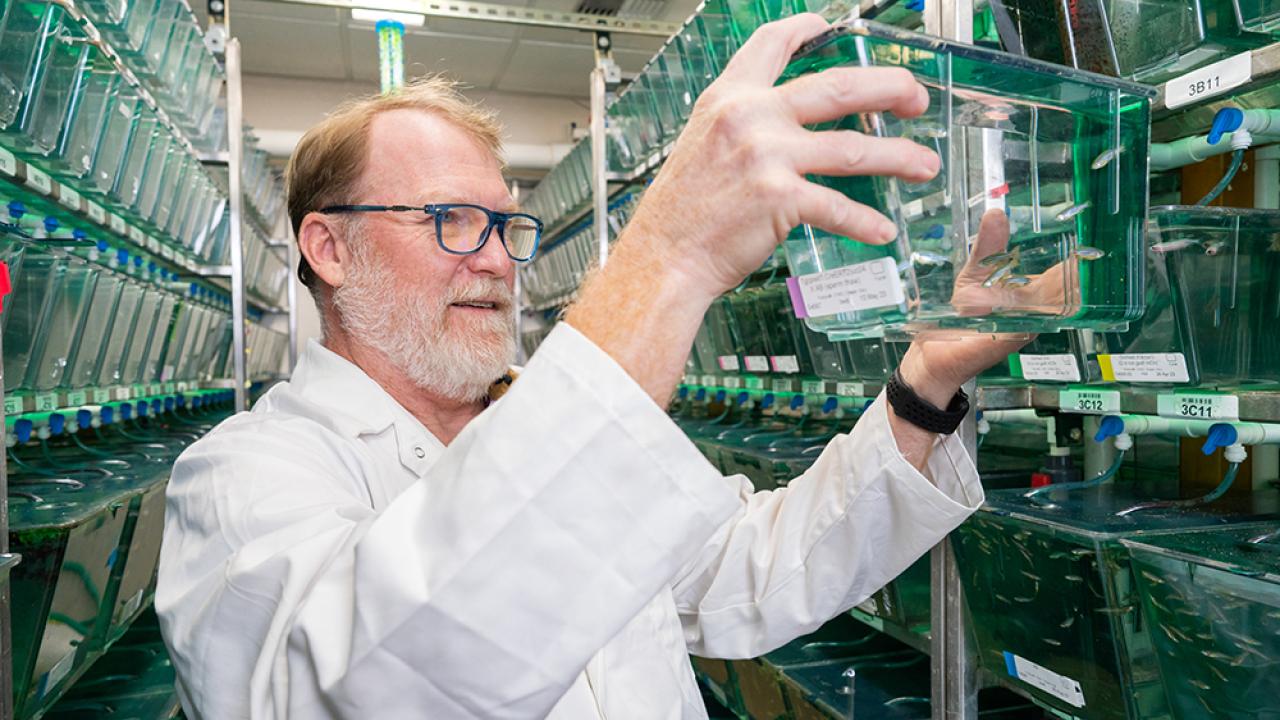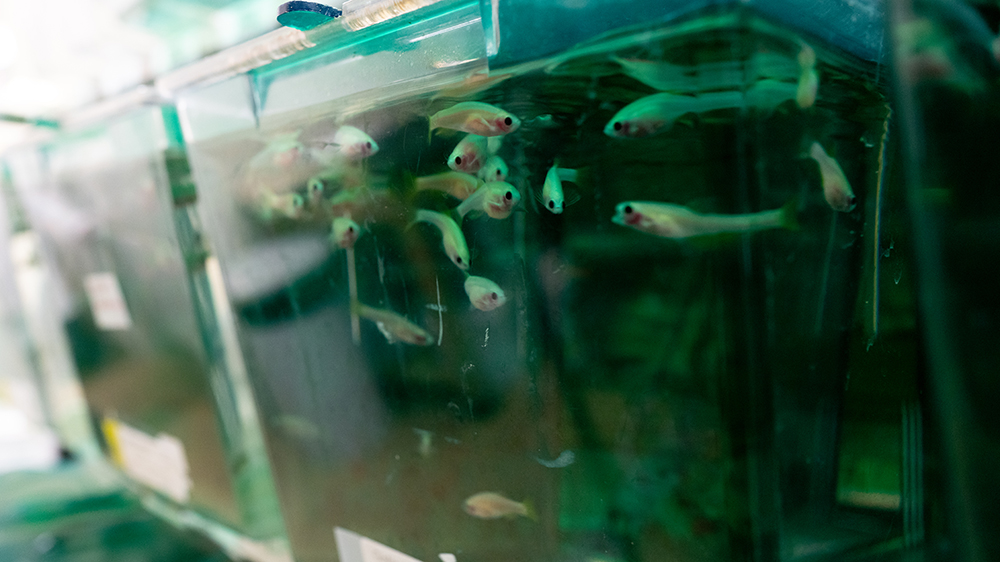
Immune Cells Drive Sex Reversal in Zebrafish – and Perhaps Fertility Loss in Women
Macrophages that normally help with ‘housekeeping’ can also renovate the ovaries into sperm-producing testes
Female zebrafish (Danio rerio) have an unusual tendency: if their egg cells are damaged, they can turn into males. Bruce Draper, a professor in the Department of Molecular and Cellular Biology (MCB) and Florence Marlow, a professor at the Icahn School of Medicine at Mount Sinai, have discovered that immune cells called macrophages play a key role in this process. These cells normally keep things “tidy” by removing dead or damaged cells – but in zebrafish they can also remodel the ovaries into sperm-producing testes. “It’s a pretty interesting and novel idea,” says Draper. “This is an example where one organ changes into an entirely different organ.”
Draper and his colleagues reported these results November 22 in the journal Science Advances. Their discovery could eventually lead to treatments for the medical condition primary ovarian insufficiency (POI), in which women experience reduced fertility.
Surprising sex reversal
The road to this discovery began a decade ago. It was already known that sex in zebrafish is determined partly by environmental factors. Unlike mammals, whose sex is determined by special X or Y chromosomes, all zebrafish larvae start with immature ovaries which contain egg cells called oocytes. From that point, the larvae can develop into either males or females — depending on how many oocytes they have.
Researchers assumed that once a zebrafish finished maturing as a female, it spent its entire life that way. But in 2013, Draper and his then-Ph.D. student Daniel Dranow discovered that if they eliminated the oocytes in adult females, their ovaries transformed into testes — causing them to become fertile males. “That was a surprise,” says Draper.
In 2016, Draper and Dranow reported that mutations in a gene called bone morphogenetic protein 15 (bmp15) had a similar effect. Their findings suggested there were strong parallels between what they were seeing in zebrafish and fertility problems in humans.
About one percent of women suffer from POI, a condition in which decreasing oocyte numbers lead to reduced fertility — sometimes, as early as age 20.
POI in humans is associated with bmp15 mutations. It is also associated with some autoimmune conditions such as rheumatoid arthritis and lupus. So Draper wondered if there might be a connection – if bmp15 mutations might actually alter immune function. “Cells in the ovary may actually produce a protein that regulates immune function,” he says. “But if bmp15 is lost, that process may be interrupted.” The immune system may receive different signals from the ovary – prompting it to attack the oocytes.

Pinpointing pivotal cells
Draper and Yulong Liu, a Ph.D. student in his lab, together with Marlow and Paloma Bravo, a postdoctoral scholar in her lab, investigated this possibility by looking at zebrafish. They used a technique called single-cell RNA sequencing to identify the genes expressed by individual cells in the fishes’ ovaries. By profiling upwards of 10,000 cells they were able to distinguish different subsets of cells, even if they looked similar under a microscope — to find the cells that were producing immune-regulating proteins.
Sure enough, they found ovarian cells that produce two proteins, called colony stimulating factor 1a (Csf1a) and interleukin-34 (IL34), that activate immune cells called macrophages – giving them a metaphorical jolt of caffeine. Only “a very small fraction of ovarian cells” produce these proteins, says Draper, but they play a pivotal role. These ovarian “caretaker” cells normally foster the healthy development of oocytes. But in zebrafish with bmp15 mutations, they increase their production of Csf1a and IL34 — potentially causing the macrophages to destroy healthy oocytes.
Marlow and Bravo tested this idea with experiments in mutant zebrafish. She found that a mutation in Csf1a prevented the oocyte loss and sex reversal that is normally caused by bmp15 mutations. A mutation in IL34 didn’t quite prevent oocyte loss and sex reversal, but it delayed these effects by a few days. Marlow and Bravo also found that the complete elimination of macrophages prevented oocyte loss and sex reversal.
Together, these results suggest that in zebrafish with bmp15 mutations, caretaker cells in the ovary actually send out a signal that summons macrophages, which devour the oocytes, triggering sex reversal.
“To my knowledge, this is the first causal link between bmp15 mutations and oocyte loss,” says Draper.
Reproductive quality control gone awry
People think of immune cells as fighting infections. But macrophages often play a slightly different role — removing dead or damaged cells from infection, injury, or aging.
In the ovary, “this mechanism likely exists to clear out damaged oocytes,” says Draper — removing cells that might not produce viable offspring.
But in certain cases, such as when there are mutations to bmp15, or in the presence of autoimmune diseases, or even during chemotherapy, this safety mechanism runs amuck, and some otherwise healthy oocyte are lost — leading to reduced fertility. “Zebrafish could be a model for POI,” says Draper, who hopes that elucidating these pathways might eventually lead to earlier diagnosis or effective treatments for POI, or ways of modifying cancer therapies to spare fertility.
Funding was provided by grants from the National Institutes of Health and the National Science Foundation.
Media Resources
- Douglas Fox is a freelance science writer based in the Bay Area.
- Macrophage activation drives ovarian failure and masculinization in zebrafish (Science Advances 2023)
- Single-cell transcriptome reveals insights into the development and function of the zebrafish ovary (eLife 2022)
- Bmp15 is an oocyte-produced signal required for maintenance of the adult female sexual phenotype in zebrafish (PLOS Genetics 2016)
- Germ cells are required to maintain a stable sexual phenotype in adult zebrafish (Developmental Biology 2013)
- Draper Lab
